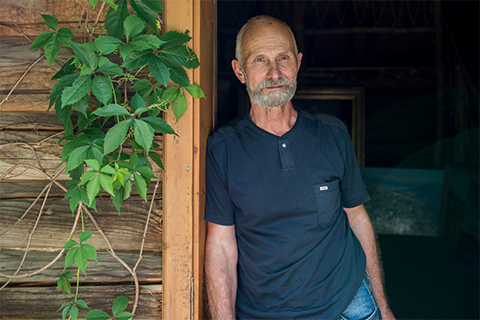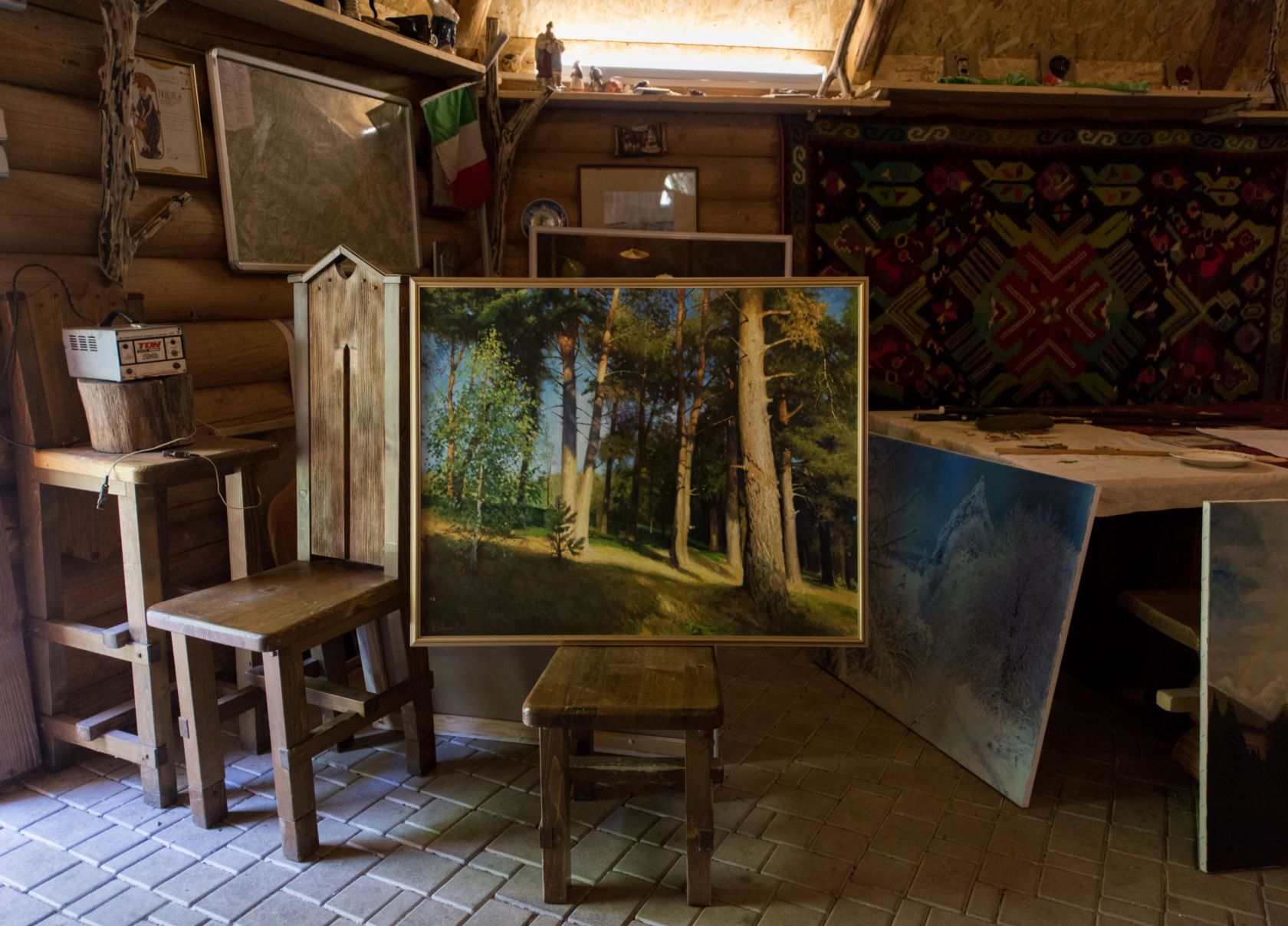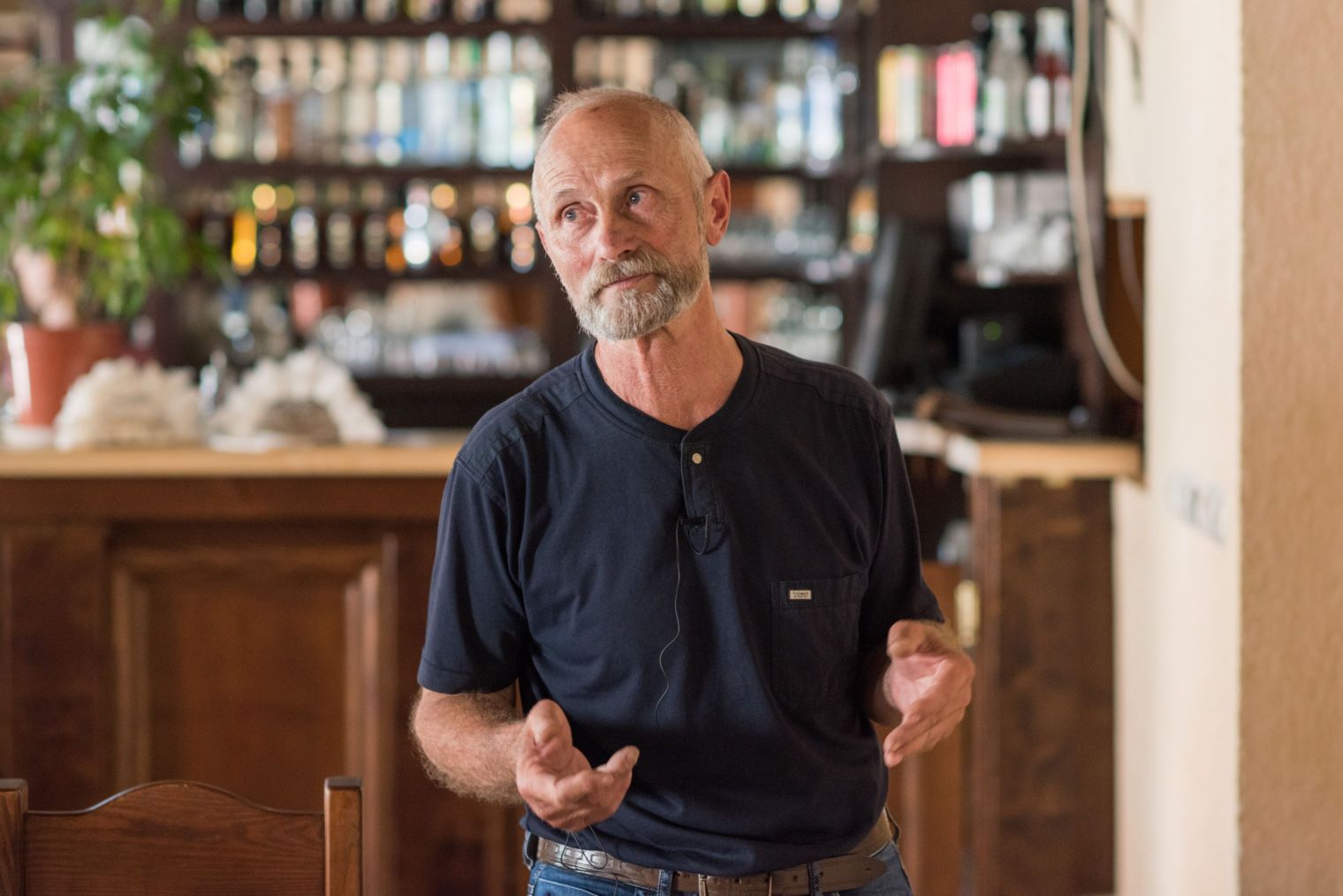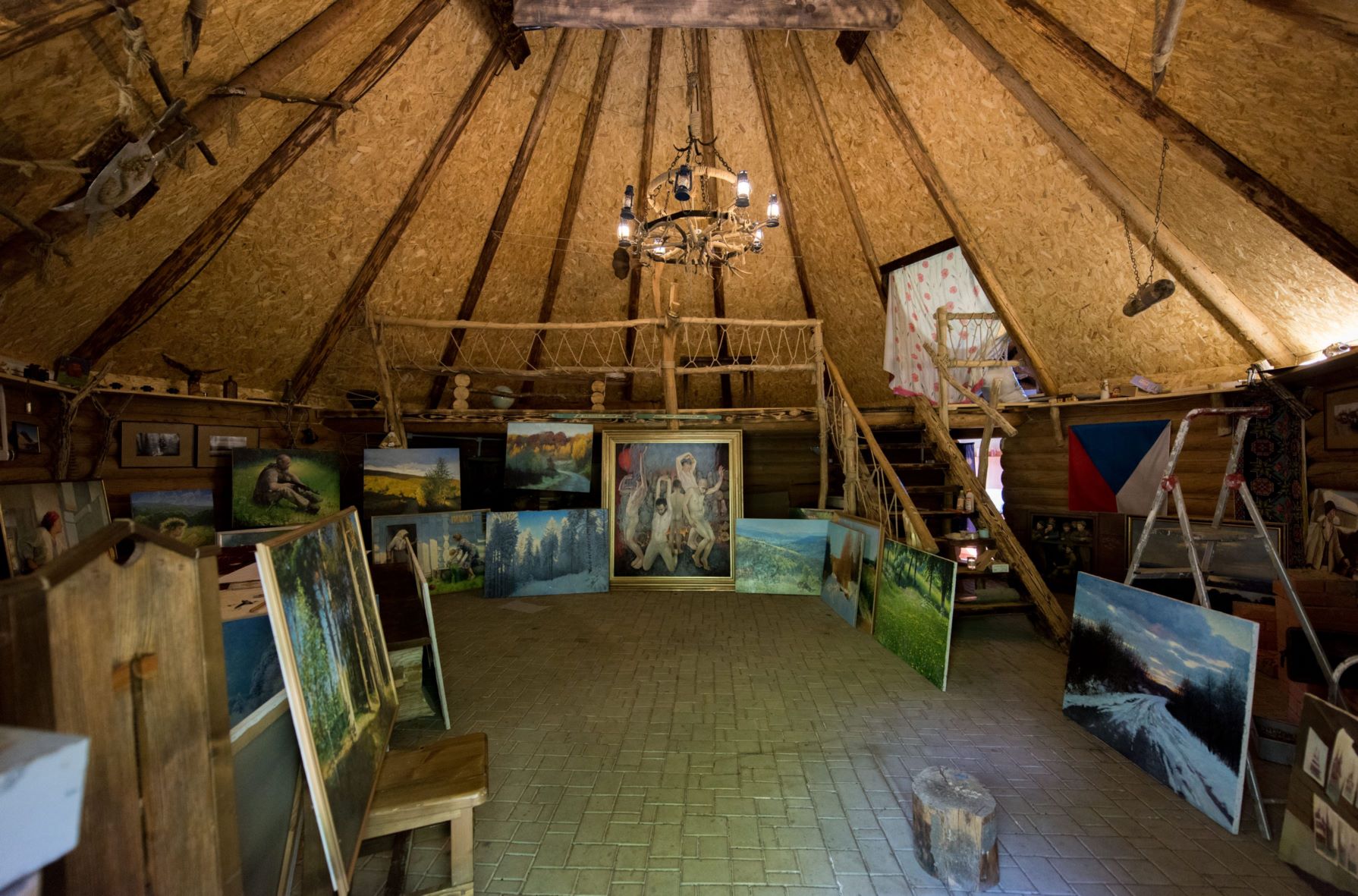
Vitalii Slobodskyi: “Every stroke of a brush is not accidental for me”
2017

It is not easy to get there to the village of Ruskyi Mochar in Velykobereznyi region, where the studio of the Honoured Artist of Ukraine Vitalii Slobodskyi is located. The village is mountainous, the road is bad, there is little infrastructure. But, the artist's studio is worth these efforts. There are a lot of pictures, old things in it. The works of V. Slobodskyi as photographs - he conveys what he saw so realistically, that it seems that we are in a photo studio, but not in a picture studio.
– Tell us about your studio: how did you build it, why here?
– We have wonderful places in Velykobereznyi region – Vyshka village, Krasiia, I rounded them up and down. I love this land, so I decided to do a studio there.
– It is very atmospheric here. In addition to paintings, there are a lot of antiques ...
– Yes, I like to collect old things with pleasure. Once a group of Scout children from all over the world came here, I asked them: do you know what a bihliaz is? Of course, they do not. So, I show them. There are many things that even adults do not know…
– Here, I can see a very interesting and original carpet on the wall…
– It belongs to my wife, it is her dowry, inherited from great-great-great-grandmother. It has an interesting story. At one time, his wife's family wove twelve unique carpets. However, in the period of dekulakization they were all taken away. One product managed to be hidden - it was literally buried in the snow. This is it: unique handwork, natural colours, high quality - he is hundreds of years old, but looks like a new one.
– What other things are dear to your heart?
– My paintings. The artist in each work puts a piece of his soul.
– Tell us about your creativity: your work is so realistic that it seems that it's not pictures at all, but a photo. How did you manage to achieve this level of skills?
– Everyone definitely has his own way. For me, for example, scrupulousness is important: there are no minor details in the work - every brushstroke in the –painting is not accidental. Everything should be in its place: if a bole it means the bole, if a fir tree it is the fir tree, if there is even a gap between the trees, then I paint it as well. By the way, it is not necessary to take an etude and draw - it is enough to gain impressions, memories and to reproduce the landscape on the canvas. And, I also like to convey the mood, in particular, of nature. It exists, it is the same as in humans. The main thing is to feel it, to catch it … In general, I'm 69 years old, and I've been drawing since childhood. Constantly. In such a way skills are developed. If the artist has not worked for at least a month, it can be said that he is lost.
– Are there any interesting stories related to your work and creativity?
– Interesting was the fate of my early work “The Curse”. If I remember correctly, I presented this picture to the exhibition on the occasion of the 60th anniversary of the formation of the USSR, but it was not accepted and criticized. Of course, it upset me. But, my mom decided to support me: she took “The Curse” and transported it to Moscow. As a result, the canvas was marked with a diploma of the 1st degree and a gold medal.
– Did you immediately start writing in a realistic manner or tried yourself in other styles?
– I tried, of course, especially in my youth! You know, students are always looking for something, so I was no exception. I remember that in Odesa, where I studied, there was an exhibition of copies of Van Gogh in "3D". For us it was something unreal! We came, looked at those smears, details, although it was not real either... Then we all fell in love with the work of Van Gogh. I am also fond of impressionism, modernism, abstraction, but it got to the point that the most difficult style of painting is realism.
– As in Shyshkin’s paintings?
– Yes, a lot of talks about the fact that it's easy – just take a picture and re-paint. But, try to do this the way it was alive and, moreover, professionally made, and not some kind of “kitsch”. Only real art will interest a simple spectator, whom you cannot bribe. In fact, very few people can paint the transparent water in the river, like Shyshkin. And, someone at the same time says that he is a banal photographer. I have only one answer to this: first try to copy Shishkin! Therefore, for me, for example, the best praise is when at an exhibition people come up and say: “This picture looks like the real one”!
– What is the most difficult for you in your creativity?
– For me, the most boring thing is doing sketches. When the canvas is painted over, the spots are spread out - that's when creativity begins, this I love. Often I sit up late and do not notice what time it is. But, in general, a true artist should do everything, be able to do everything, be a master and feel how the smear is laid, how the work is arranged. Well, for example, Bokshai, he was always as an example - I always have a book with his works before my eyes.
– And you, by the way, at times were not familiar with?
– There was a case. My teacher of chemistry Kateryna Shelepets was an original artist and was familiar with all the leading figures of Transcarpathian art. Somehow she decided to introduce me to her pupils. I remember that Yosyp Bokshai decided to paint at the old bridge on Zabrid. There we met. He and my teacher painted and I sat next to them, I kept an album on my lap and painted too. Bokshai came over, looked and said: “Do you want me to teach you to paint”? I replied: “Of course”! And, he said: “To be an artist, you have to paint a lot”. I remember that Boksahi’s painting of the bridge at Zabrid was then sold for a pittance in one of the shops on Korzo street. And, I did not think of buying this work and still regret it. And, the picture was good - nature, a bridge, a river and my teacher, who paints with a sketchbook...
– Do you have your favourite work?
– I like the last work “Early Spring”. When I painted it, the landscape was constantly changing; at first I painted an old willow, and in a year it was already broken, in two - it sank closer to the river, then - it disappeared altogether. But, I was able to reproduce the landscape, the first impression, keep it on the canvas. I also like “Early Spring in Kostryno Village” and many others. In fact, all the works are dear to me.
– Thank you for the conversation, I wish you success in your work!
Text: Nataliia Petervari, Denys Fazekash
Photo: Robert Dovhanych
